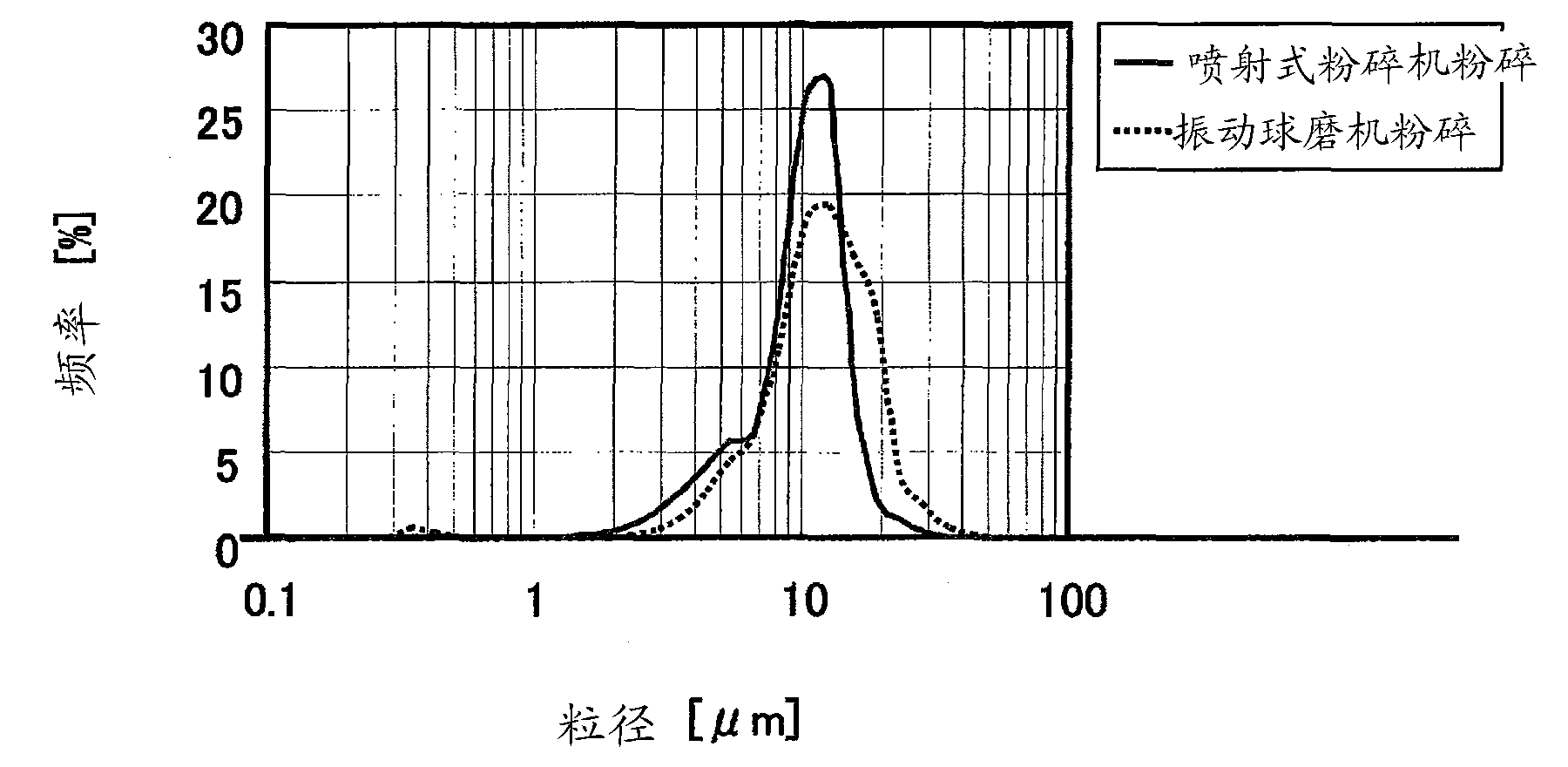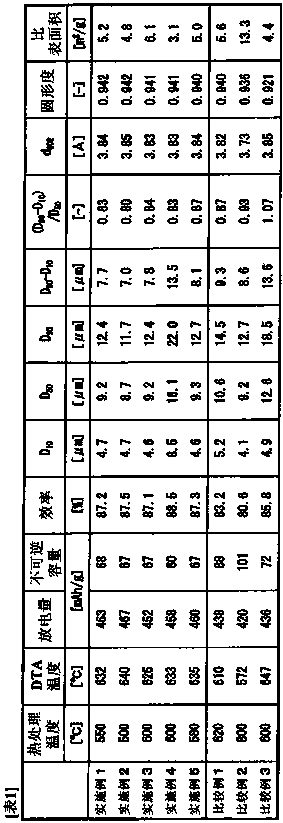Carbonaceous material for non-aqueous electrolyte secondary battery negative electrode
A non-aqueous electrolyte, secondary battery technology, used in battery electrodes, circuits, electrical components, etc., can solve the problems of poor charge-discharge repeatability and graphite crystal damage of secondary batteries, and achieve excellent charge-discharge cycle characteristics and discharge capacity. High and fast charging and discharging effect
- Summary
- Abstract
- Description
- Claims
- Application Information
AI Technical Summary
Problems solved by technology
Method used
Image
Examples
Embodiment 1
[0095] Put 70kg of petroleum-based pitch with a softening point of 205°C and an H / C atomic ratio of 0.65 and 30kg of naphthalene into a pressure-resistant container with a stirring blade and an outlet nozzle and an internal volume of 300 liters, heat, melt and mix at 190°C, and then cool To 80~90°C, pressurize the pressure vessel with nitrogen gas, extrude the contents from the outlet nozzle, and obtain a rope-shaped molded body with a diameter of about 500 μm. Next, the rope-shaped molded body is pulverized so that the ratio (L / D) of the diameter (D) to the length (L) becomes about 1.5, and the obtained pulverized product is charged into a polymer dissolved in 0.53% by mass heated to 93°C. In an aqueous solution of vinyl alcohol (saponification degree 88%), stir to disperse and cool to obtain spherical asphalt molding slurry. After most of the water was removed by filtration, naphthalene in the asphalt formed body was extracted and removed with n-hexane in an amount about 6 t...
Embodiment 2
[0099] Carbonaceous material 2 was produced in the same manner as in Example 1, except that the precalcination temperature was set at 500°C.
Embodiment 3
[0101] Carbonaceous material 3 was produced in the same manner as in Example 1, except that the temperature of preliminary calcination was set at 600°C.
PUM
| Property | Measurement | Unit |
|---|---|---|
| specific surface area | aaaaa | aaaaa |
| particle size | aaaaa | aaaaa |
| particle size | aaaaa | aaaaa |
Abstract
Description
Claims
Application Information
 Login to View More
Login to View More - R&D
- Intellectual Property
- Life Sciences
- Materials
- Tech Scout
- Unparalleled Data Quality
- Higher Quality Content
- 60% Fewer Hallucinations
Browse by: Latest US Patents, China's latest patents, Technical Efficacy Thesaurus, Application Domain, Technology Topic, Popular Technical Reports.
© 2025 PatSnap. All rights reserved.Legal|Privacy policy|Modern Slavery Act Transparency Statement|Sitemap|About US| Contact US: help@patsnap.com



